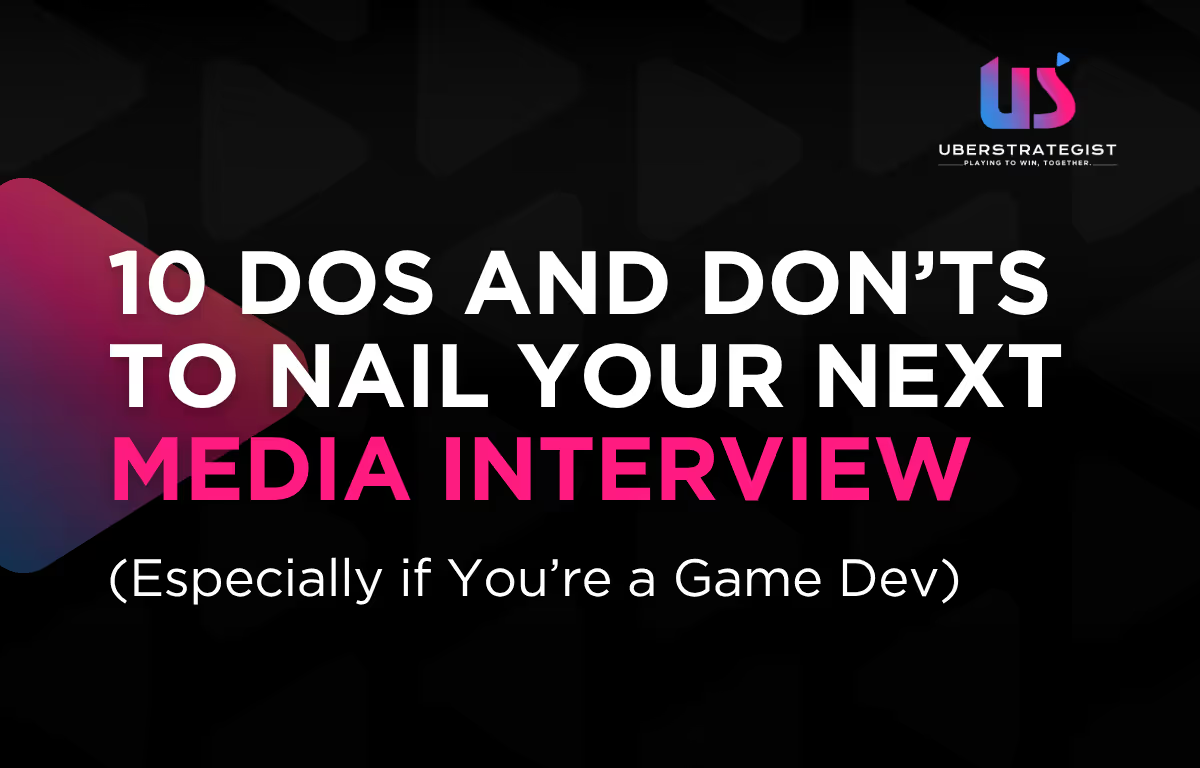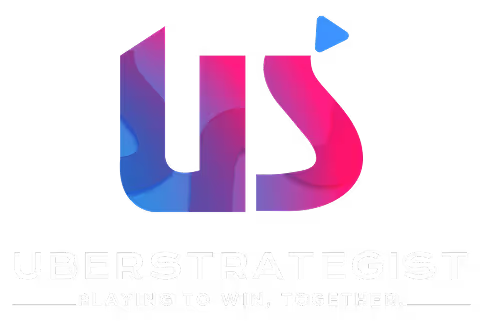7 PR Mistakes to Avoid During Your Video Game Launch
Posted in:
Video Game PR
The video game industry is somewhat notorious for PR mistakes and failures.
However, it’s the smaller PR mistakes that are made every day which can compromise the success of your video game launch. Here’s the thing; everyone makes mistakes. Even video games PR and marketing agencies do. We’ve made mistakes in the past, but we do our best to learn from them and improve as much as possible.
So while we won’t be sharing glaring errors, what we’ll be talking about today, are our tips on how you can avoid these costly PR mistakes and reach your full launch potential.
Because, in the video game industry, PR works. Whether you are launching your very first game or releasing the next game of the series, carefully planned PR marketing can help you:
- Reach a bigger audience
- Attract your target customer
- Increase credibility
- Build brand awareness
The video game industry is now estimated to be worth $178.73 billion. This means that there is a lot of potential for new video games, but there is also a lot of competition. By avoiding the most common PR mistakes, your launch will be on the right track for success.
7 Common PR Mistakes You Want to Avoid
When it comes to PR, the smallest things can turn into the biggest mistakes. Here are some common PR mistakes to avoid during your video game launch.
1. Using an Invalid, Stolen, or Purchased Contact List
You know those contact lists being shared by developers online in an open Google Doc? Don’t use them! It may feel like a clever shortcut to get the contact details of the best press in the world. However, there are two problems.
First, that list is about three years out of date. About 60-70 percent of those contacts have moved on to other companies, other roles within journalism, or have left the industry entirely. Low-quality contact information will not help your PR efforts.
Secondly, when you use lists like these, you’ve got some major privacy issues to deal with. We’re talking GDPR, as well as US federal and state privacy laws. Anything you do with your email marketing can (and will) be used against you in a court of law.
The long story short is that you should avoid borrowed, stolen, or purchased contact lists and focus on making your own customized media list for your PR marketing.
2. Mass Emailing
So let’s say you have curated your own personal media list of potential journalists and publications that are a good fit for your video game. Now you just have to write one email and send it out to everyone, right?
No! The next most common PR mistake is to send a mass email to everyone with the same exact message. Mass emailing just doesn’t work.And don’t just take our word for it. There is consensus on this, on BOTH sides of the equation - PR professionals and journalists alike.
The Muck Rack State of PR 2021 report found that 96 percent of PR professionals say individual, 1:1 emails are most effective for pitching to journalists.
Meanwhile, a Fractl survey of journalists revealed that journalists’ biggest pet peeves are receiving emails from people who haven’t researched their work (#1 on the list), haven’t researched the publication they write for (#2 on the list), mass email blasts (#6 on the list), and emails that are not personalized (#9 on the list).
Journalists want personalized emails, and personalized emails work better too. When you find a contact that is the right fit to cover your video game, make sure to send a 1:1 email, use their name, and personalize the message.
3. Writing a Weak Pitch
The pitch of your email essentially sells your idea/game to that specific journalist. Therefore, it should demonstrate that you know who they are, what they write about, and that your game is the right fit for them.For example:“I’m emailing you about my new game ‘Flash Gordon Vs. The World.’I thought this might be something you’re interested in because you covered Flash Gordon comics and ‘70s themed epic adventures.”
In general, when drafting your pitch:
- Keep it short (under 200 words)
- Keep it concise (brief and comprehensive)
- Make it actionable (what should they do with the information?)
- Make it personal (why should they care?)
- Make it valuable (what’s in it for them?)
For more information and a walkthrough of the what, why, who, and how of a PR pitch, check out our article How to Craft a Killer Video Game PR Pitch Strategy to Grab the Media’s Attention.
4. Not Having Assets Ready
If you’ve avoided the common PR mistakes so far, then by now, your personalized emails are in the hands of potential journalists who may want to cover your game. If they reply back, don’t fall for the next PR mistake - not having the assets that they need ready for them. Journalists are busy people, and if you don’t deliver what they need to write the story, they may just move on to another project. You can avoid this PR mistake by having your press kit ready, so you can quickly pass over everything they’ll need.
Some items to include in your press kit include:
- Important Game Info (release date, price, supported platforms, website, social media, contact information)
- Description
- Unique Selling Points
- Full Sample Press Release
- Screenshots
- Video
- Reviews and Awards
- Company Bio
- Logos, Icons, and Graphics
- Artwork
- Music
- Credits
5. Not Having a Follow-Up Strategy
Not having a follow-up strategy is a PR mistake that can take two forms.
On one end of the spectrum, you may just give up when you don’t hear back. Giving up is a mistake!
On the other end of the spectrum, you may start sending emails excessively, trying desperately to reach them. Spamming is also a mistake! (In fact, it ranks #3 on the list of journalists’ biggest pet peeves.)
The fact is that journalists are busy people, receiving hundreds of emails per day. A recent survey found that journalists only respond to about 3 percent of their emails, while other research indicates that only about 8 percent of emails result in a published article.
That means it’s important to follow up to give the journalist another chance to open, read, and consider your story.
According to the Muck Rack State of PR 2021 report, PR professionals suggest that it’s appropriate to follow up one or two times, and most of them wait about 3-7 days between follow-ups.
6. Concentrating on One Publication at a Time
As PR mistakes #1-5 indicate, PR is quite a time-consuming process. That leads us to another costly misstep - concentrating on one publication at a time. You don’t have time to wait to do this. Instead, work simultaneously and individually with each journalist interested in your story.
For this reason, the embargo has been part of the PR toolkit for years. An embargo refers to sharing an announcement or media kit with journalists prior to a launch date with the agreement that the information cannot be published until a specific date determined by the company.
Embargos are important because:
- They ensure that coverage (from multiple platforms and outlets) hits at the same time.
- They increase your search, social, and editorial footprint, driving pre-orders, wish lists, or sales.
- You do not need a legal agreement with the media for an embargo.
The majority of media understand what embargoes are for and why they’re important. Coverage is planned by publications around embargoes, so they’re able to offer enough resources to cover the games they want to showcase to their readership. Don’t be afraid to ask when other embargoes are so you can avoid them; we do this all the time, and it helps us deliver the best results for our clients.
7. Stopping at PR
A final PR mistake to avoid is stopping at PR or using PR exclusively for your launch. In fact, PR is only one piece of the puzzle! For a successful video game launch, you need three things:
- Publicity: Including PR strategy, press tours, events, mock reviews, etc.
- Promotion: Including social media, trade shows, paid promotions, etc.
- Partnerships: Including strategic partnerships with influencers, publishers, and investors.
For help in planning and executing a comprehensive, strategic launch of your video game, check out UberStrategists’ work here.
Although the video game industry has had some pretty notable PR disasters over the years, the problems that hurt video game companies the most are smaller mistakes that have big consequences. Avoid these seven common PR mistakes, and you will be on your way to a successful video game launch.

.avif)








